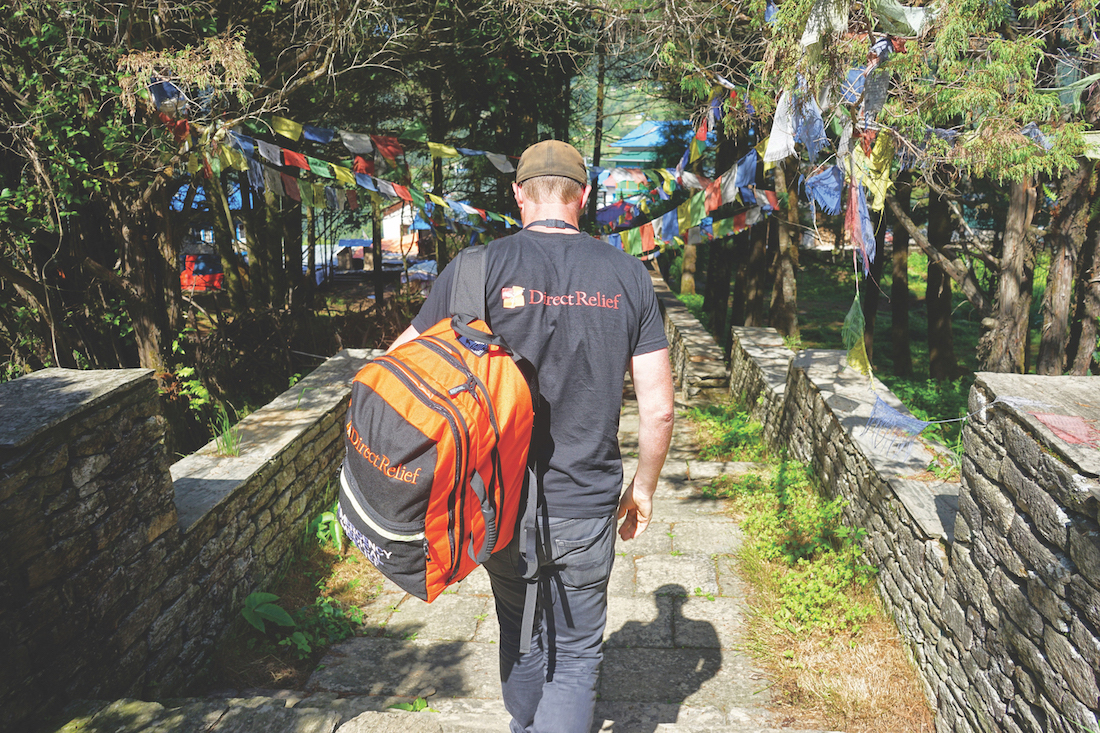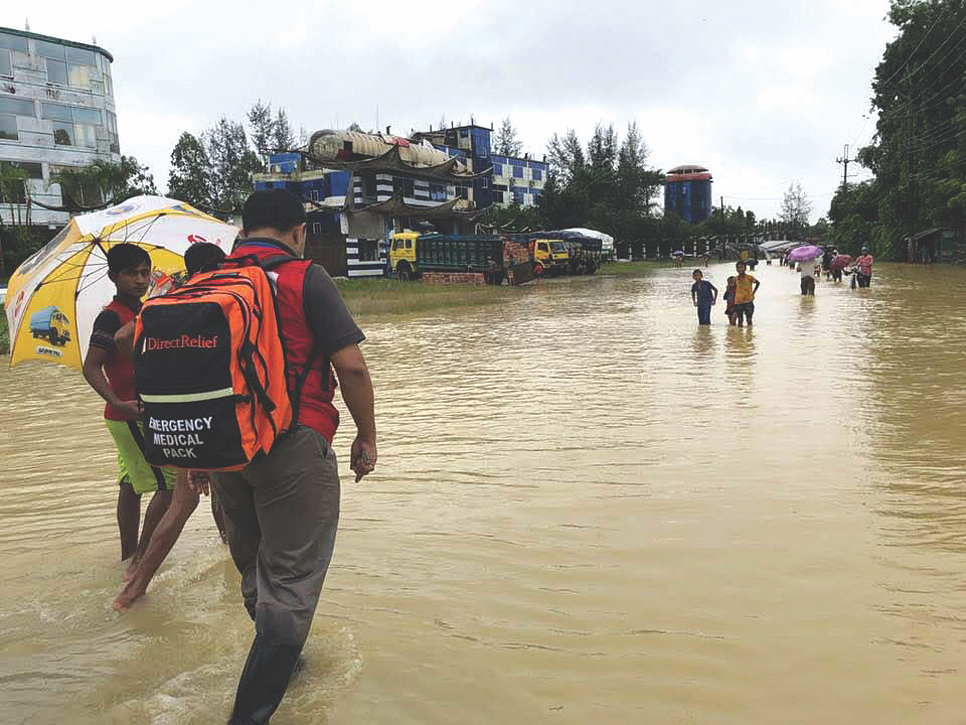Global Aid in Time of Global Crisis

In 1945, William Zimdin, an Estonian immigrant who had fled fascism to California, dedicated his fortune to sending relief parcels to war-torn Europe, sparking the organization that would eventually become Direct Relief.
More than 75 years later, Direct Relief provides emergency response and humanitarian and disaster relief to all 50 U.S. states and roughly 100 other nations. Their organization’s work is unabating and often in areas overlooked in the headlines. The Santa Barbara-based nonprofit shipped 27 tons of medicine to Sri Lanka when an economic crisis pushed the island-nation’s healthcare system near collapse. These ongoing efforts across the globe meant that Direct Relief is always ready, with supply chains and partnering organizations ready to respond at a moment’s notice.

For years, Direct Relief had been working in Ukraine. After the invasion, the organization began receiving requests for items they’ve rarely had to send, everything from body bags to treatments for chemical weapons. Since then, it has shipped more than 900 tons of medical aid to 400-plus hospitals and clinics in Ukraine. Direct Relief has also provided $15.9 million of direct financial assistance, both within the country and to refugees in surrounding areas like Poland and Moldova, for medical essentials such as pharmaceutical prescriptions.
“Before the crisis in Ukraine started, we were already delivering medications to the Ministry of Health in Ukraine. When the war started, we didn’t have to start from scratch and try to figure out who to work with; we already had a really clear channel of how to get medicines into Ukraine,” says Heather Bennett, vice president of partnerships and philanthropy.
To generate support for Ukraine, Direct Relief has had to get creative in its fundraising, with efforts ranging from a Carnegie Hall concert hosted by Richard Gere, to partnering with Epic Games, who donated two weeks of revenue and subscriptions from the video game Fortnite – a total of $27 million – to Direct Relief and four other nonprofits.
Direct Relief is supported purely by their contributors and any donated funds can be directed to a specific program or area. Take a look at where and what crises are happening in the world. Given its vast range of geographical regions they serve and medical causes they support, there’s a good chance Direct Relief is already there with boots on the ground, continuing their legacy of aid.
Direct Relief
Donate now!www.DirectRelief.org
Vice President, Partnerships and Philanthropy: Dean Axelrod
(805) 879-4932
Mission
Direct Relief is a humanitarian aid organization, active in all 50 states and more than 80 countries, with a mission to improve the health and lives of people affected by poverty or emergencies – without regard to politics, religion, or ability to pay.
Begin to Build a Relationship
We know you care about where your money goes and how it is used. Connect with this organization’s leadership in order to begin to build this important relationship. Your email will be sent directly to this organization’s Director of Development and/or Executive Director.
When Cholera hit Somaliland, many patients were unable to access early interventions and rehydration treatments due to lack of resources and transportation. Without Direct Relief’s Cholera Kit, particularly IV fluids and oral rehydration salts, 50% of our patients could have died. Direct Relief’s timely response gave us the tools and encouragement we needed to fight the outbreak.
Maximizing Your Impact: How Direct Relief Stretches Every Dollar
Direct Relief ensures 100% of every donation goes directly to delivering aid, honoring donor intent with full transparency. By leveraging billions in in-kind medical donations, the organization amplifies each dollar’s impact, delivering more aid than cash alone could achieve.
“Donors appreciate that their money is used efficiently to deliver aid where it’s needed most,” says Dean Axelrod, VP of Partnerships in Philanthropy.
Direct Relief’s commitment to accountability and transparency builds trust, giving donors confidence that their contributions directly support critical programs and those in need.
Key Supporters
Emma Carrasco
Adam Cooper and Melissa Fleisher
Mary M. Dwyer
Henrietta Holsman Fore and Richard Fore
Heitham Hassoun
Mark and Kim Linehan
Jay McGonigle
Harry and Jacqueline McMahon
Annalisa Pizzarello
and Robert Conway
Marla Salmon
Mark and Lynda Schwartz
Perry Siatis
Laurie Siegel and Joseph Nosofsky
Tom Strickland
Thomas and Heather Sturgess
Elizabeth A. Toro and Mark Hauser
